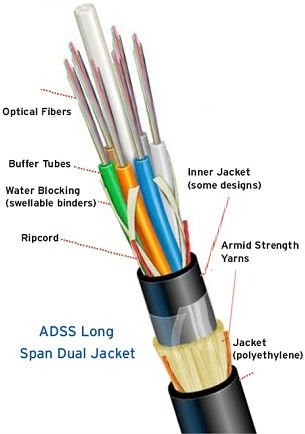- Related articles
- Optical Transceivers for Cisco SG200-50FP-EU Switch
- Applicable to 1000BASE-BX Standard optical transceiver models
- All Cisco DS-CWDM-1470's information (List price, Specs, Datasheet PDF, Compatibility matr
- Optical Transceivers for Cisco SG250-26HP-K9-EU Switch
- All Cisco DWDM-XFP-39.77's information (List price, Specs, Datasheet PDF, Compatibility ma
- Buying guide :What is transceiver and what does it do?
- How to Replace Network Card in Laptop?
- The compatibility and difference between PCI PCI-X and PCI-E
- The Difference between GBIC and X2
- All Cisco GLC-LH-SM's information (List price, Specs, Datasheet PDF, Compatibility matrix)

Definition:
An optical fiber (or optical fibre) is a flexible, transparent fiber made by drawing glass (silica) or plastic to a diameter slightly thicker than that of a human hair. Optical fibers are used most often as a means to transmit light between the two ends of the fiber and find wide usage in fiber-optic communications, where they permit transmission over longer distances and at higher bandwidths (data rates) than wire cables. Fibers are used instead of metal wires because signals travel along them with lesser amounts of loss; in addition, fibers are also immune to electromagnetic interference, a problem from which metal wires suffer excessively. Fiber optic technology uses glass (or plastic) threads (fibers) to transmit data. A fiber optic cable consists of a bundle of glass threads, each of which is capable of transmitting messages modulated onto light waves.

Benefits of fiber optic Technology
Less expensive: Several miles of optical cable can be made cheaper than equivalent lengths of copper wire. This saves your provider (cable TV, Internet) and you money.
Thinner: Optical fibers can be drawn to smaller than copper wire.
Higher carrying capacity: Because optical fibers are thinner than copper wires, more fibers can be bundled into a given-diameter cable than copper wires. This allows more phone lines to go over the same cable or more channels to come through the cable into your cable TV box.
Less signal degradation: The loss of signal in optical fiber is less than in copper wire.
Light signals: Unlike electrical signals in copper wires, light signals from one fiber do not interfere with those of other fibers in the same cable. This means clearer phone conversations or TV reception.
Low power: Because signals in optical fibers degrade less, lower-power transmitters can be used instead of the high-voltage electrical transmitters needed for copper wires. Again, this saves your provider and you money.
Digital signals: Optical fibers are ideally suited for carrying digital information, which is especially useful in computer networks.
Non-flammable: Because no electricity is passed through optical fibers, there is no fire hazard.
Lightweight: An optical cable weighs less than a comparable copper wire cable. Fiber-optic cables take up less space in the ground.
Flexible: Because fiber optics are so flexible and can transmit and receive light, they are used in many flexible digital cameras.
How fiber-optics works:
Light travels down a fiber-optic cable by bouncing repeatedly off the walls. Each tiny photon (particle of light) bounces down the pipe like a bobsleigh going down an ice run. Now you might expect a beam of light, traveling in a clear glass pipe, simply to leak out of the edges. But if light hits glass at a really shallow angle (less than 42 degrees), it reflects back in again—as though the glass were really a mirror. This phenomenon is called total internal reflection. It's one of the things that keep light inside the pipe. The other thing that keeps light in the pipe is the structure of the cable, which is made up of two separate parts. The main part of the cable—in the middle—is called the core and that's the bit the light travels through. Wrapped around the outside of the core is another layer of glass called the cladding. The cladding's job is to keep the light signals inside the core. It can do this because it is made of a different type of glass to the core.
Conclusion:
Shooting light down a pipe seems like a neat scientific party trick, and you might not think there'd be many practical applications for something like that. But just as electricity can power many types of machines, beams of light can carry many types of information—so they can help us in many ways. We don't notice just how commonplace fiber-optic cables have become because the laser-powered signals they carry flicker far beneath our feet, deep under office floors and city streets. The technologies that use it—computer networking, broadcasting, medical scanning, and military equipment (to name just four)—do so quite invisibly.





































































